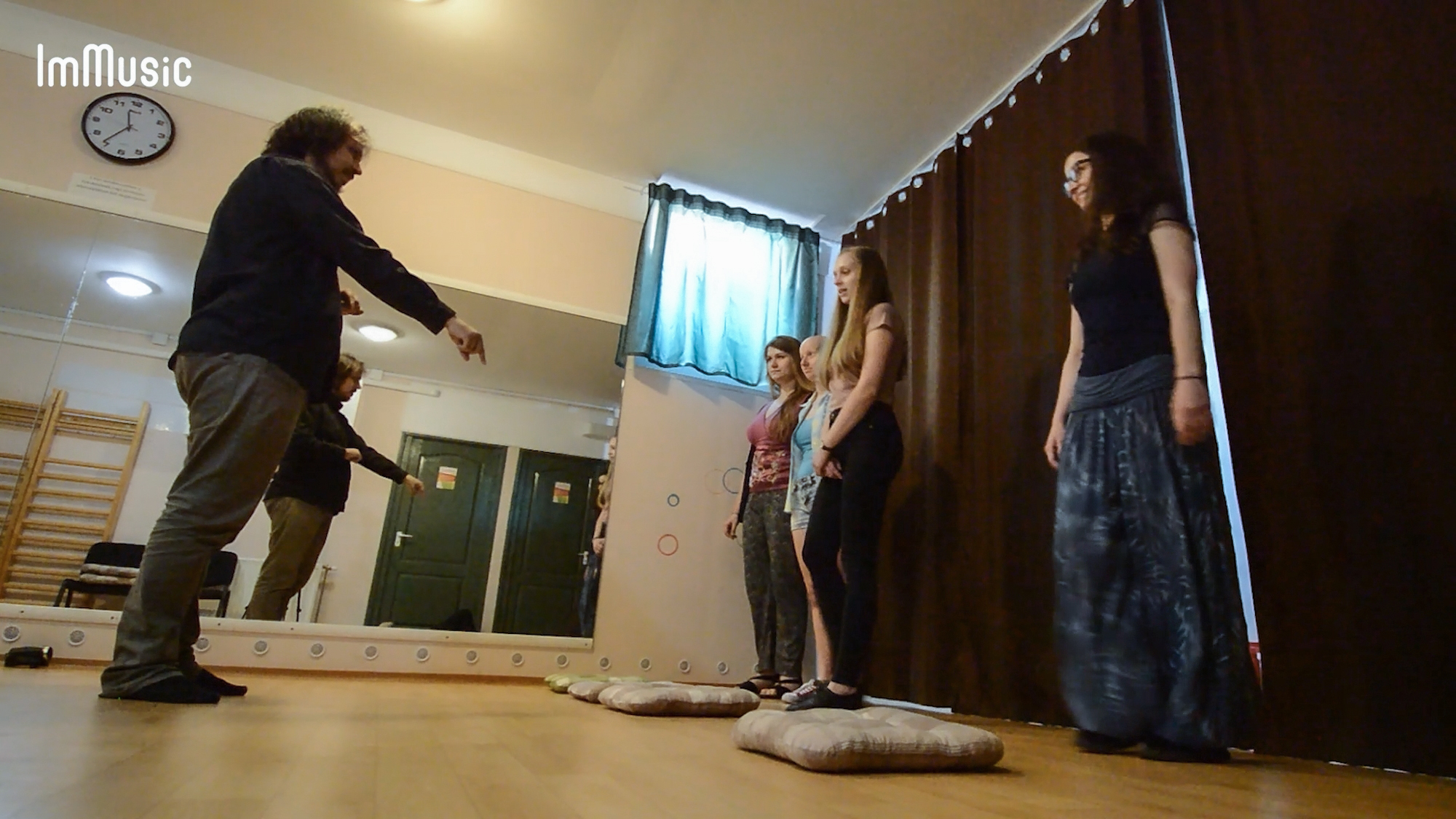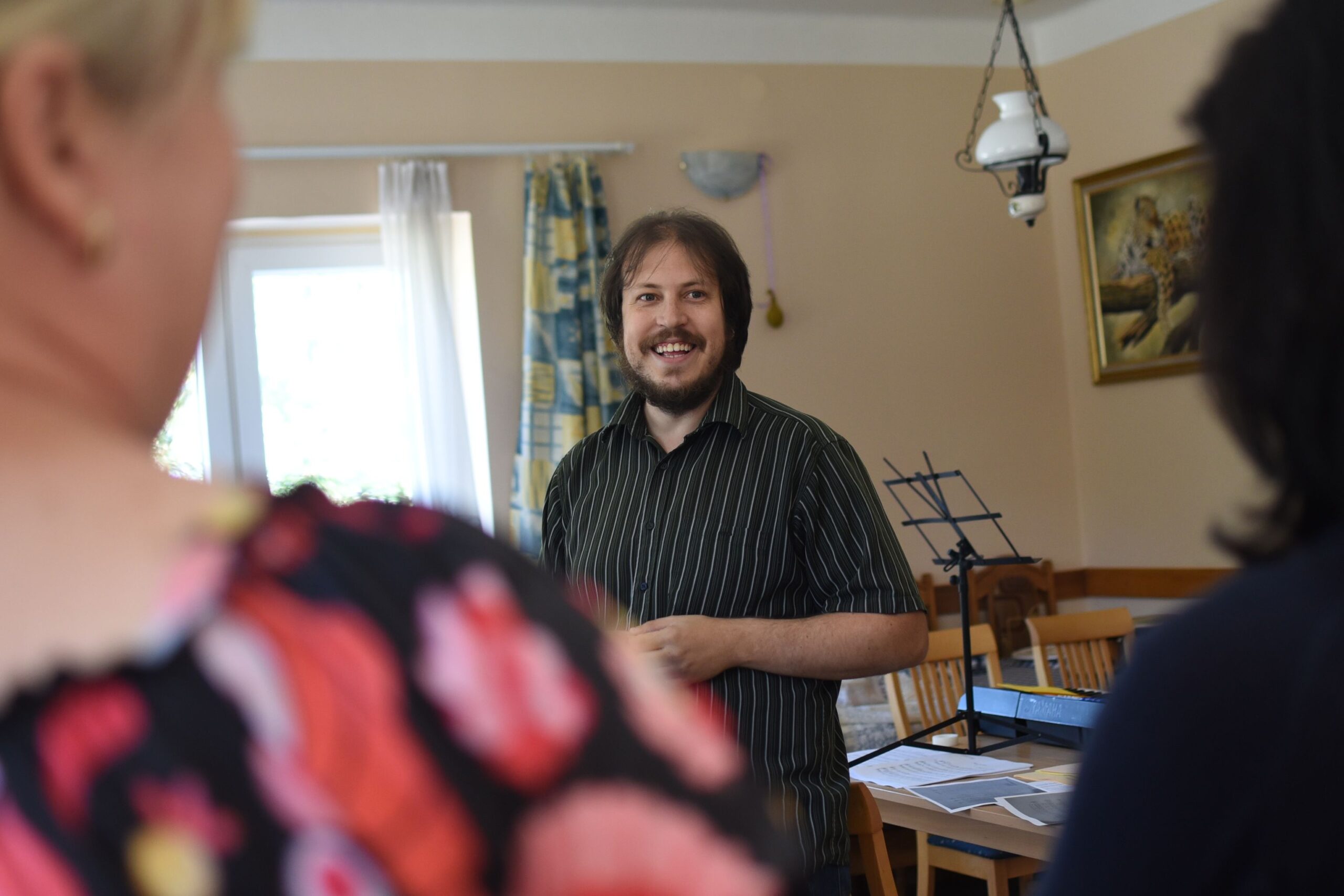Human Piano
32

Category
vocal
Age
8+
Number of participants
in multiples of 3 or 4
Duration
approx. 20 min.
Working method
group work
Musical abilities of the trainers
1 2 34 5 6
Equipment and instruments
- any musical instrument or app
to have the first tuning references
Competences
- concentration
- collaboration
- attention
- cooperation
- hearing sensitivity
Human Piano
This activity is designed to learn the pentatonic scale in a funny
and innovative way. In addition, it will develop motor,
cognitive and affective aspects indirectly.
AIM
The aim of the activity is to provide with a basic tool to perform music. The most common and basic multicultural scale: the pentatonic. This knowledge will enable the participants to complete other activities and to have a resource to create music.
In addition, we must comment that this scale is much related to the Hungarian music and that it has also an approaching objective to a participant culture.
Lastly, to promote our aim of impulsive musical activities for young people these kind of active and alternative ways of learning are a tool for it.
Description
- The motivator will ask the participants to form lines and to let some space between them.
- The facilitator will give a note (part of the pentatonic scale) and ask the participants to repeat it in loud voice.
- All together will jump to right or left, and by the new position they will add a new note.
- They will be asked to produce a third note, but in the third one the facilitator will not give the “sound clue”, they will only jump to a specific position and they will automatically discover it.
- They are not going to use more “sound clues” and they will sing and jump following the facilitator, making music.
Comments for facilitators
Ensure a comfortable place to practice it, spacious and clean.






Recent Comments